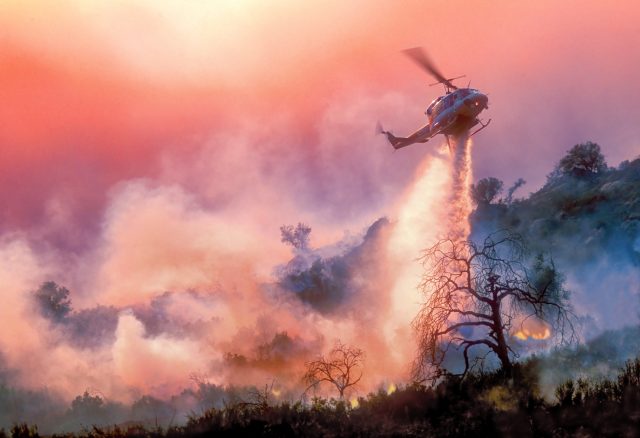Could California’s new fire regs hamper Napa’s wine industry?
New fire regulations that are coming into effect in California may bar wineries in Napa from rebuilding after a fire, it has emerged.

Last month, the Board of Forestry and Fire voted unanimously to pass the State Minimum Fire Safe Regulations’ which iit said was designed to implement minimum fire safety standards across the state.
However, according to a report by Wine-Searcher, new regulations concern the width of roads to ensure that a fire truck can turn around in them (and allows enough room for a fire truck heading towards the fire to safely pass cars fleeing the area), but this may preclude construction down single track rural lanes that are too narrow to support this.
As Wine-Searcher pointed out, the wine industry may be one of the only high value-added industries in the country where businesses are interested in building at the end of one-lane rural roads.
It reported that Napa County was still reviewing the new regulations, having consulted with other agencies, County departments, and the Board of Forestry “to better understand the scope and application of the new requirements” and its planning director would be reporting its recommendations on 18 October.
It quoted Stu Smith, general partner of Smith-Madrone Vineyards in Napa Valley who published a letter of complaint in the local paper St Helena Star pointing out that “if you live on a dead-end road… and your property is more than a mile from… (a through road) and your home and or winery burn down for whatever reason after January 1, 2023, you will not be allowed to rebuild.”
Although it sems that there may be an exception for agriculture, Wine-Searcher said, one issue is that the regulations are open to interpretation by the different counties – meaning different rules could apply across California, depending on which county the wineries is in, and how that county interprets the rules.
Chris Howell, co-general manager of Cain Vineyard & Winery, which burnt down in the Glass Fire in 2020, thought to be 10th most destructive wildfire ever in California, raged through the state last September causing millions of dollars worth of damage, including the loss of 650 homes. told Wine-Searcher that the intentions of the new regulations were clear. “We need to be extremely thoughtful about where and how to rebuild in areas at risk to wildfire,2 He told Wine-Searcher. “Access is a key issue, but not the only one. It is our belief that the future Cain winery will be near enough to a public road to allow rebuilding our winery.”
Partner Content
However he also noted that the prohibition in the Fire Safe Regulations regarding strategic ridgelines “only applies to new buildings on undeveloped ridgelines. Our current interpretation is that the Cain Winery is an entitled development and would not be prevented from rebuilding under this provision.”
The Glass Fire that raged through Napa last September was one of the most destructive wildfire ever seen in California, causing millions of dollars worth of damage, including the loss of 650 homes and ripping through two key winemaking counties.
Read more:
California needs to remove vineyards to be sustainable
AI that can taste smoke taint in wineries affected by Cali fire
New law offer lifeline for to winemakers hit by wildfire insurance premiums
Cakebread Cellars ‘ruled out’ of causing Napa wildfire
Related news
Castel Group leadership coup escalates
For the twelfth day of Christmas...
Zuccardi Valle de Uco: textured, unique and revolutionary wines




